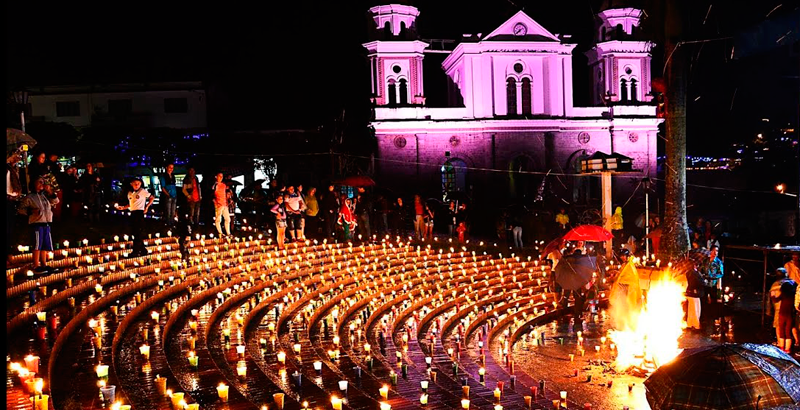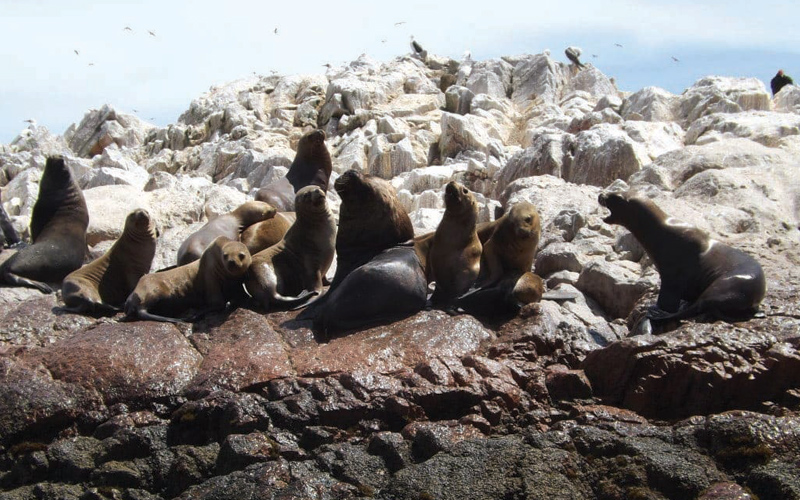Colombia Celebrates the Holiday Season Joyfully With Candles, Food and Plenty of Celebration
I always love to visit Colombia in the winter.

The country has a robust energy as the locals embrace the holiday season with lights, seasonal food and festivals that start at the beginning of December and keep growing until after the new year.
Throughout the country Christmas is celebrated with great joy, but Bogota especially takes on a festive air with the Christmas lights and celebration of the traditional “Dia de las Velitas.” Dia de las Velitas translates into Little Candles Day or Immaculate Conception Eve, and is the beginning of the Christmas holiday. This year the celebration begins throughout Colombia on the evening of December 7, to December 8, 2023.
In Bogota the residents dress every corner of the city for the holidays beginning on Dia de las Velitas eve, placing candles and paper lanterns on sidewalks, streets, in the parks and squares and even on windowsills and balconies. The following day, December 8, you will see white flags with the image of the Virgin Mary being flown everywhere and plenty of fireworks and parties to properly begin the holiday festivities.
I ventured into several parks and squares for my “Little Candles Day” experience last year with matches and a handful of small, multi-colored candles to light while making my wishes for the new year. The idea is the candle wax will melt down and the candles will stick to the surface of the street or fixture with the result being burning little candles everywhere, effectively lighting the entire city.
Special Locations
The neighborhood of La Candelaria in Bogota is another festive conversation starter for the holiday. This neighborhood is full of local art and country pride seen on the exterior of many buildings. Candelaria is the height of Bogota’s historical essence. The roots of Bogota’s creation began here in 1538. The name originates from a Catholic chapel honoring the Virgen de la Candelaria. However, even before Bogota’s Catholic roots were engrained in the city, the area was considered a sacred site for the Muiscas, an indigenous group dating back to ancient times prior to the area’s Spanish conquest.
The La Candelaria neighborhood today is still home to a colonial-era cathedral and many narrow streets full of local shops and handicrafts. The Gold Museum is in the area with artifacts dating back to before the country was established. The visitor will also want to enjoy Museo Botero, with a look at one of Columbia’s famous painter/sculpture artist Fernando Botero. The Botero Museum is in the Cultural Block of the Banco de la República and admission is free.
Definitely wear your walking shoes in this neighborhood because there is much to explore as you traverse the steep stone streets. Take notice of the many colonial and republican construction style homes, which have been preserved and are now considered of great historical and cultural interest in Bogota. In fact, the diverse mix between the old and the new styles of architecture here is likely the reason this area of Bogota is a melting pot for artists, students, and visitors hungry for the true feel of this city.
And, as you discover the array of holiday festivities around the area another must experience celebration also begins in early December called the Expoartesanías. This artisan craft fair is held in Bogota each year at the Corferias Convention Center near the neighborhoods of Quinta Paredes and El Recuerdo. It is a must see if you want to get a flavor of the cultural art throughout Latin America.
The Expoartesanías has been a staple in Colombia for 30 years and as many as 800-plus vendors will descend on the convention center from December 7 to 20 this year to sell their wares. The government of Colombia is also part of the event taking the initiative to arrange both travel and accommodation aid to allow artisans living in the more isolated indigenous and Afro-Colombian communities in the country the ability to attend the show and showcase their unique handicrafts.
Finally, take a Sunday in Bogota to visit Paloquemao Market for a real feel of the foods that are revered by the locals. Paloquemao is a large flower and food market showcasing tastes from around Colombia. I took the Savoring Paloquemao tour with a foodie luxury tour operator (www.foodies.com.co/en) and was delighted as I spent several hours getting to know the taste of the many Colombian flavors on display there. My favorites were the many fruits that were new to my tastebuds; lulo, tomate de árbol (tamarillo), uchuva, curuba, gulupa, granadilla, anón, níspero, and tasting the flavor of a country keeps it in your memory for many years.
Bogotá is truly one of the most fascinating cities I have found in South America. Get ready for the assortment of historical old streets to wander, bohemian districts, modern areas and street food or high-end restaurants that all seem to easily harmonize alongside one another. There is no doubt you will feel the unwavering rhythm in Bogota; the people, the food, the celebration, especially as the holiday season begins and then you too will understand why this city is a standout in South America.
https://colombia.travel/en




